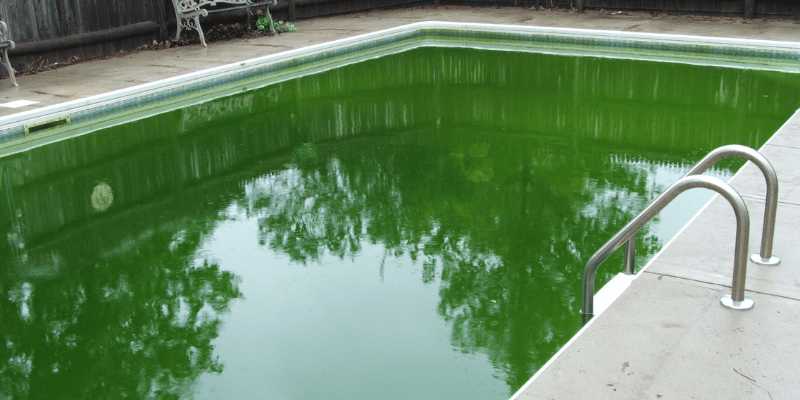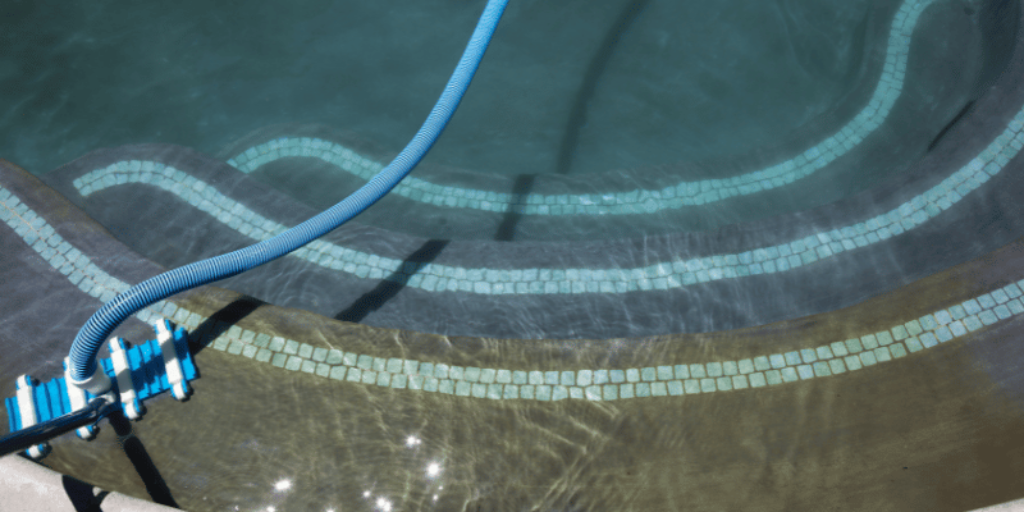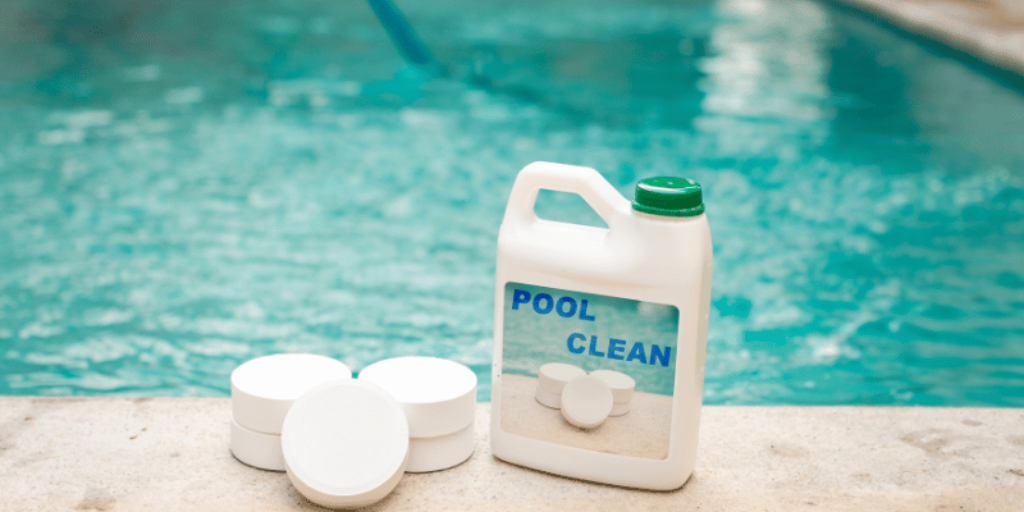
How to remove algae from pool without a vacuum? Dealing with algae in the pool is not a walk in the park, especially when you don’t have the vacuum on hand. Algae can turn the pool water green and cloudy, making it unappealing and potentially harmful.
Removal of pesky algae and restoration of crystal-clear beauty is quite a hassle even if you do not have a vacuum. There are several cleaning methods and chemical treatments that help in getting rid of algae blooms.
How to Remove Algae From Pool without a Vacuum?
Pool vacuums can be quite pricey. However, there are alternative methods to tackle green algae without breaking the bank. Whether you own a vacuum or not, eliminating green algae from the pool is crucial.
Here are some alternative methods to remove algae, without the need for an expensive vacuum.
Remove Dirt and Brush Pool Wall
Do not let dirt, debris, and other objects pile up in the bottom. Whenever you notice large pieces of debris, leaves, and petals accumulating in the pool, use a plastic leaf rake or a pool net to collect floating elements and throw them away.
In addition, use a thick brush to scrub the walls of the pool and get rid of pesky algae. Choosing the right type of brush is critical to removing algae and other microorganisms effectively.
For concrete pools, use a stainless or metal brush to scrub the floors. Additionally, a regular nylon bristle brush is useful to remove algae from vinyl floors.

Shock Treatments
If you do not own a pool vacuum, pool shock treatments are the second most effective treatment for combating algae and keeping water clean and clear. Shock treatments utilize a strong oxidizing agent to destroy algae, bacteria, and other contaminants.
For such treatments, chemicals include Calcium Hypochlorite, Sodium Di-chlor, and Potassium Monopersulfate. These chemical oxides are effective in maintaining proper sanitation and killing algae growth.
Shock dosing the water can be perceived more as a ‘deeper clean’. It involves adding a powerful concentrate of swimming pool sanitizer to raise chemical levels, kill harmful pathogens, and break down waste.
Chlorine is the most effective pool shock treatment, however, there are plenty of Chlorine-free alternatives as well.
Chlorine Pool Shock
Most pool owners use Chlorine pool shock to raise the chlorine levels of the water. Liquid chlorine or tablets and granules are added to the pool to keep it algae-free and clean.
This chemical works by attaching itself to the algae, harmful pathogens, and debris. Then, it creates free molecules which, in turn, kills algae and other contaminants.
Also, it raises the pH level from 7 to 7.6 which makes it difficult for algae and other microorganisms to survive.

Pool Algaecide
Using pool algaecide is a targeted treatment that is bound to get results. Depending on the algae type you’re dealing with, choose a suitable pool algaecide and get rid of algae seamlessly.
Unlike other chemical treatments, it is the easiest and most straightforward method. This does not require any fancy equipment and is composed of effective formulations to suppress algae growth.
Before pouring the algaecide, keep the pool pump running to constantly circulate water. Add algaecide after a few minutes and leave it for 24 hours to work its magic.
Pool Filtration System
If the pool has in-built filters, it is quite simple to eliminate algae. Follow the given steps to remove stubborn algae from the pool
Clean the Filter
First of all, ensure that filters are cleaned, and remove any blockage, debris, and other elements. After cleaning the filter, turn it off and start the cleaning process.
Scrub the Walls and Floors – Use the right type of brush and scrub the side of the walls as well as the floor.
Turn on the Filter
After vigorous scrubbing, turn on the filter and drain the dirty water from the filter.
Pool Maintenance Practices
Following the pool maintenance practices is vital to keep the pool tidy and prevent algae growth. Besides preventing algae from blooming in the first place, it keeps the water from turning murky and cloudy.
Clean it regularly and use a pool cover to prevent dirt accumulation. Do not let leaves and stones float on the pool surface, remove them using the rake. Add chlorine and use several cleaning methods to prevent the growth of algae. Make sure pumps and filters are not blocked and are functioning effectively.
Frequently Asked Questions
What Kills Algae Naturally?
There are plenty of methods to kill algae without using strong chemicals. Use baking soda, borax, or detergent mix to kill algae. However, these methods work for algae in the early stages, not severe algae issues.
How Do I Get Rid of Algae in My Pool Bottom?
The quickest way to get rid of algae in my pool bottom is by vacuuming and scrubbing the pool. In addition, using shock treatments and balancing the water’s chemistry is useful in combating algae.
Can You Swim in a Pool with Algae?
It is not advised to swim in a pool with algae, whether severe or mild. Swimming in a pool with algae may result in skin rash and other infections.
Conclusion
Contrary to popular belief, eliminating algae from your pool without a vacuum is totally doable. By following the methods we discussed earlier, such as brushing the pool walls and floor, shock treatments, using the filters, and draining and refilling the pool, you can effectively get rid of algae and enjoy a clean swimming pool.







